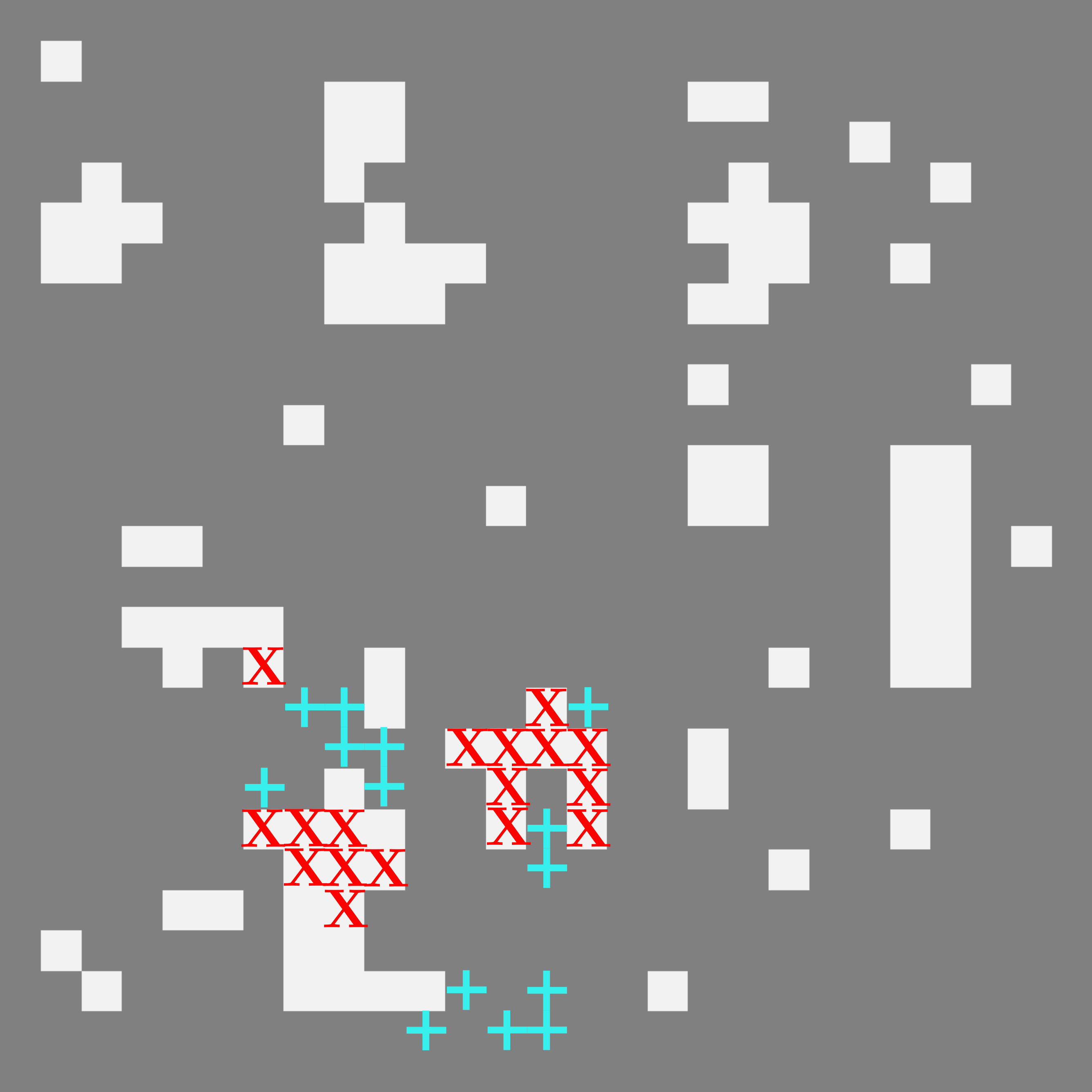Stochastic Game of Life
We consider a stochastic version of Conway's Game of Life, played on a two-dimensional board. We shall use the following packages,
using Distributions
using StochasticAD
using OffsetArrays
using StaticArraysSetting up the stochastic Game of Life
Each turn, the standard Game of Life applies the following rules to each cell,
\[\text{dead and 3 neighbours alive} \to \text{ alive}, \\ \text{alive and 0, 1, or 4 neighbours alive} \to \text{ dead}.\]
The cell's status does not change otherwise. In our stochastic version, these rules instead occur with probability 1-θ, while the opposite event has probability θ. To initialize the board at the beginning of the game, we randomly set each cell alive with probability p.
The following high level function sets up the probabilities and provides them to play_game_of_life.
function play(p, θ=0.1, N=12, T=10; log=false)
# N is the board half-length, T are game time steps
low = θ
high = 1-θ
birth_probs = SA[low, low, low, high, low] # 0, 1, 2, 3, 4 neighbours
death_probs = SA[high, high, low, low, high] # 0, 1, 2, 3, 4 neighbours
return play_game_of_life(p, vcat(birth_probs, death_probs), N, T; log)
endplay (generic function with 4 methods)We can now implement the Game of Life based on the specification. At the end of the game, we return the total number of alive cells.
# A single turn of the game
function update_state(all_probs, N, board_new, board_old)
for i in -N:N
for j in -N:N
neighbours = board_old[i+1, j] + board_old[i-1, j] + board_old[i, j-1] + board_old[i, j+1]
index = board_new[i,j] * 5 + neighbours + 1
b = rand(Bernoulli(all_probs[index]))
board_new[i,j] += (1 - 2 * board_new[i,j]) * b
end
end
end
function play_game_of_life(p, all_probs, N, T; log=false)
dual_type = promote_type(typeof(rand(Bernoulli(p))), typeof.(rand.(Bernoulli.(all_probs)))...) # a hacky way of getting the correct array type
board = OffsetArray(zeros(dual_type, 2*N + 3, 2*N + 3), -(N+1):(N+1), -(N+1):(N+1)) # center board at (0,0), pad by 1
# initialize the board
for i in -N:N
for j in -N:N
board[i,j] = rand(Bernoulli(p))
end
end
board_old = similar(board)
log && (history = [])
# play the game
for time_step in 1:T
copy!(board_old, board)
update_state(all_probs, N, board, board_old)
log && push!(history, copy(board))
end
if !log
return sum(board)
else
return sum(board), board, history
end
end
play(0.5, 0.1) # play the game with p = 0.5 and θ = 0.199Note that we did have to be careful to write this program to be compatible with the current capabilities of StochasticAD. For example, we concatenated birth_probs and death_probs into a single array all_probs and used the index board[i, j] * 5 + neighbours + 1 to find the probability, rather than use the more natural if alive... else... syntax.
Differentiating the Game of Life
Let's differentiate the Game of Life!
@show stochastic_triple(play, 0.5) # let's take a look at a single stochastic triple
samples = [derivative_estimate(play, 0.5) for i in 1:10000] # take many samples
derivative = mean(samples)
uncertainty = std(samples) / sqrt(10000)
println("derivative of 𝔼[play(p)] = $derivative ± $uncertainty")stochastic_triple(play, 0.5) = 60 + 0ε + (-2 with probability 271.9999999999999ε)
derivative of 𝔼[play(p)] = 134.7092 ± 14.487504080447536The following sketch of the final state of the board for a single run gives some insight into what the stochastic triples are doing. The original board is depicted in grey and white for dead and alive, and the cells which flip from dead to alive in the "alternative" path consider by the triples are marked with + signs, while the cells which flip from alive to dead are marked with X signs.

⠀